Where the Creativity of Business Meets Art
Third Interview: Innovation x Creativity (Part 1)
27 July 2023
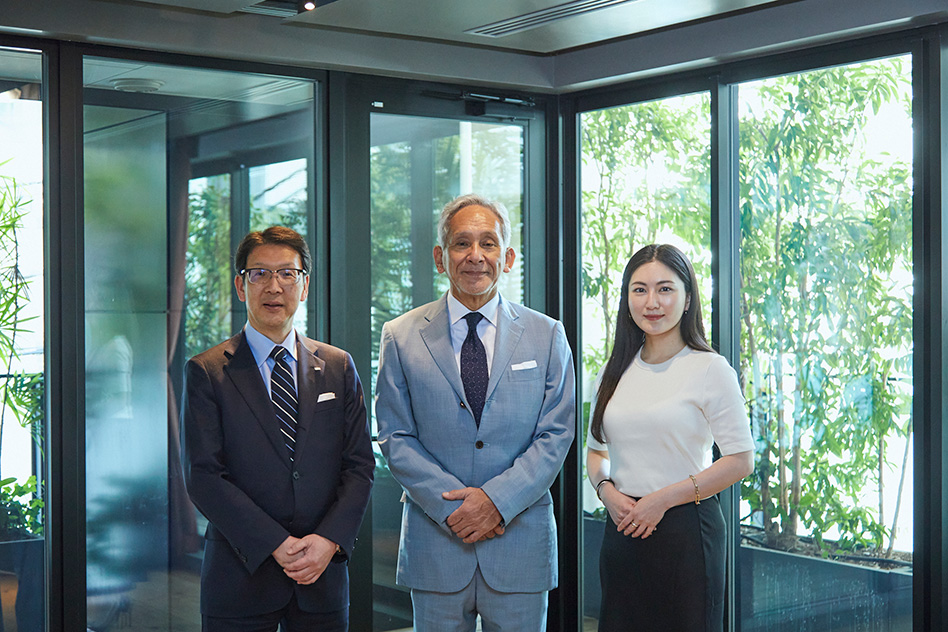
Okuda: Today, we welcome a special guest, Dr. Seiichiro Yonekura, one of Japan's leading experts in innovation research. Dr. Yonekura has also focused on the education of many innovators, including Kaito Miwa, who appeared in the last issue of this series. In addition to his leading position in academia, he advises corporate management as an external director at several companies. Now, without further ado, I would like to hand it over to Ms. Tanaka.
Innovation is a means, not an end. At the heart of any issue are two questions: What do you want to do? And what do you have to do to achieve it? The worst thing you can do is say, "Let's innovate," then pretend you’re doing something worthwhile. (Yonekura)
Tanaka: Dr. Yonekura, I read your book Creative Response: Entrepreneurial History of Modern Japan. I was never any good at Japanese history and didn’t study very much in junior high and high school, but as an adult, I find myself with opportunities to learn more about it, and I think about just how funny life can be sometimes. [laughs] There were things in your book that are stranger than fiction, and I couldn’t help but wonder why I found such an exciting topic so dull in school. I really enjoyed reading the book. When I initially heard the word innovation, I thought it was far removed from a musician like me. But as I read through your book, I began to wonder what "innovation" meant in the first place. So please let me start by asking—what is innovation?
Yonekura: You don’t beat around the bush, do you? [laughs] People often talk about "doing innovation" or becoming an "innovative organization," but whenever they do, “innovation” becomes the goal. So, these days I try to be contrarian and say things like, "Innovation is unnecessary” or, "You don't have to be an innovative organization.” [laughs] At the heart of any issue are two questions: What do you want to do? And what do you have to do to achieve it? Companies strive to increase profits, expand their market share, and balance their business activities with environmental considerations, which was long thought impossible. And they do it through a struggle with ingenuity, new ideas, and the integration of different things. When it goes well, people retroactively apply the label of “innovation.” I believe this is the right approach to understanding the concept. Despite this, everywhere you look, there are calls to innovate without clarifying what you actually want to do. This is a serious problem that plagues Japan today. Again, innovation is a means, not an end, so it is crucial to avoid simply asking people to “innovate.” So, the answer to your question is this: Innovation provides unprecedented value concerning issues related to society, economy, and thought.
We don't live to innovate but to create something bigger than ourselves, such as a better life or a better global environment and economy. (Yonekura)
Okuda: I wonder if giving shape to an idea for a specific purpose is in and of itself an innovation mindset. Is that your understanding?
Yonekura: Yes, I would say so. When conventional methods don’t work, or you’re unable to differentiate your product toward furthering your goal, you have to devise other methods, which people may see as innovative. I don’t think that any person or company that has preemptively announced their intent to innovate has ever been able to follow through with actual innovation. As I wrote in my book, the Meiji Restoration will always be among the greatest innovations in Japanese history. Its revolutionaries translated the concept of “democracy” into Japanese using the Chinese characters for “people” and “principal” because people are central to the idea. Similarly, “Ginza” was the original Japanese word for “bank” (銀座, lit. “silver seat”), a reference to the Tokyo district where silver coins were minted, but the word za (座) means “seat” and had no action of its own, so they came up with the word ginko (銀行, lit. “silver going”), which indicated the movement of money. In this way, our forebears invented new concepts that have been internalized in society today. Modernization at that time was, in today's terms, like replacing an operating system. In hindsight, what they were doing was innovative, but at the time, they were faced first with the question of whether they could gain independence, and their immediate task was to be able to deal with colonial powers on equal terms. To do so, they had a clear purpose: to establish Japan's own convertible currency, form an independent national entity, introduce democracy, and create a constitution. The Meiji Restoration is what led to the ingenuity needed to achieve their goals.
In Western terms, it was an unusual civil revolution, as it was carried out by low-ranking samurai, part of the feudal system that should have been all but wiped out. This is quite different from examples in the West. The more I think about it, it had to be different. They had to do something different to survive. However, when you look at old arguments in pre-WWII Japan, it seems that any differences from Europe were mistakenly perceived as lagging behind. Being “different” isn’t the same as being “late.” Now we realize that there were some important distinctions between similar events in Japan and the West and that new innovations were only made possible by finding and filling in the gaps. For example, in hindsight, it was tremendously innovative to dismantle the samurai class who supported the Meiji Restoration by purchasing their positions and then abolishing it as a feudal class. This innovation occurred because Japan was different, not because it was late. That’s what I wanted to write about in this book. We don't live to innovate but to create something bigger than ourselves, such as a better life or a better global environment and economy.
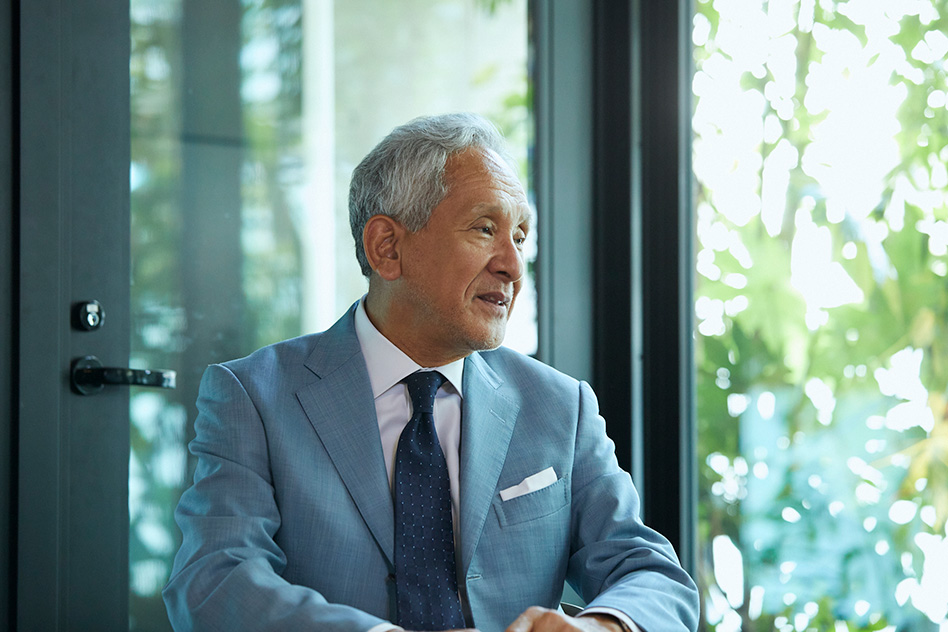
Tanaka: Among my colleagues in the music world, we use the term “the Medici Effect” to describe a new technique or unprecedented duo. I wonder what the difference is between that and innovation.
Yonekura: It's the same if you’re referring to the idea of combining diverse elements to try something new. Classical music has conventions developed over long periods, but within those conventions, musicians can be adventurous in the combination of interpretations in order to express what they want. They change tempo, intensity, even tone. This is the great thing about genuine innovation. We can discover new ideas or find purpose in a musical score created centuries ago, to bring it back to my previous comment. These kinds of innovations in classical music intrigue me.
Tanaka: So, these are small innovations.
Yonekura: No, I’d say they’re big. When I hear you sing, I think about how different it is from anything I’ve heard before. The other day, I saw an inflight program that compared listening to the same piece by different conductors, and I was amazed at how the same piece could sound so different. It’s challenging yet thrilling to accomplish something new within limited parameters. What is important is that we appreciate the musicians who pour themselves into their performances more than those who do something new just for the sake of seeming different or innovative. Your purpose has to come first.
It’s funny. While big corporations are caught in a dilemma of paralysis, Silicon Valley comes up with ChatGPT out of nowhere as if to say, “You fools.” I’d love to see this dynamism in Japan. (Yonekura)
Okuda: There are similarities between innovation in classical music and business. Classical music is bound by the five lines of the staff and cannot deviate much from pieces written long ago, so musicians must get creative to express themselves. Companies, too, are bound by financial statements written for investors. If the established parameters are broken, the company will lose investors, and it will go out of business. Therefore, we must always create new value that exceeds a certain level of performance on the balance sheet, which indicates a degree of financial soundness, profitability, and the ability to make money. Business and classical music are virtually the same in that sense.
Yonekura: I see. Both are genuine acts of orchestration. Within the many different fields of business, the president is the conductor, so if the conductor changes, so does the tune. It’s interesting because, for example, if a large company wielding the baton for an industry becomes paralyzed due to some dilemma, a company from Silicon Valley can suddenly come in and overtake them. And now we have ChatGPT. Over one billion people have used the service in the first three months since its release, and I’m sure my students will use it to write their papers. Its accuracy is also increasing, so while we’re used to searching on Google, in the future, we may interact with ChatGPT in a new kind of search experience, and Google may become increasingly irrelevant. I didn’t expect these advances to come so soon, but I’d like to see the dynamism of Silicon Valley in Japan, too. At a time when giants like Google and Microsoft, which are many times larger than Japanese companies, are orchestrating entire industries, I want to see a company from Japan come up with something new that makes them look like fools.
Tanaka: When I read your book, I thought that the main focus of the business world was on what you call “creative destruction” and that your idea of an “adaptive response” or “creative response” is precisely what we do every day in the world of classical music. I find the relationship between classical music and business fascinating.
Yonekura: Indeed, there is a resemblance. Just like Mr. Okuda mentioned, there's almost a formulaic standard in business and classical music. It comes down to whether we continue to 'adapt' along known trajectories or take a creative stance that really surprises people.
When Steve Jobs first unveiled the iPhone to the world, he was particularly insistent on its subtle rounded corners. We see how the importance of semantic value in products has grown beyond affordability and quality. (Yonekura)
Okuda: As we touched upon in our previous discussion, the most startling revelation during my time working in Europe over twenty-five years ago was the stark contrast in values compared to the U.S. One automaker I visited told me that they made cars that only 5% of the developed world would want to buy. For this reason, they refined the sound when you close the door and fine-tuned the purr of the engine, for example, neither of which can be perfected by a machine. It's all done by hand. That last ten minutes of craftsmanship causes the car to sell for $20,000–30,000 more. They say that's where their value lies. This story came as a shock to me because, in those days, management in Japan was focused on increasing efficiency through mechanized mass production to enhance price competitiveness, much like the U.S. was. The Japanese have never been particularly conscious of how they assign value. There's a history of being led to believe that value proposition lies in offering good quality at affordable prices. Given this historical context, I suspect it might have been difficult for many of us to grasp the meaning of concepts like value creation, value-driven management, and innovation at the time.
Tanaka: I wonder if this could be attributed to the Japanese mindset of humility and reservedness. Perhaps Japanese people have trouble justifying a high price for something even when they recognize its value, and maybe this is due to a tendency to downplay their own worth.
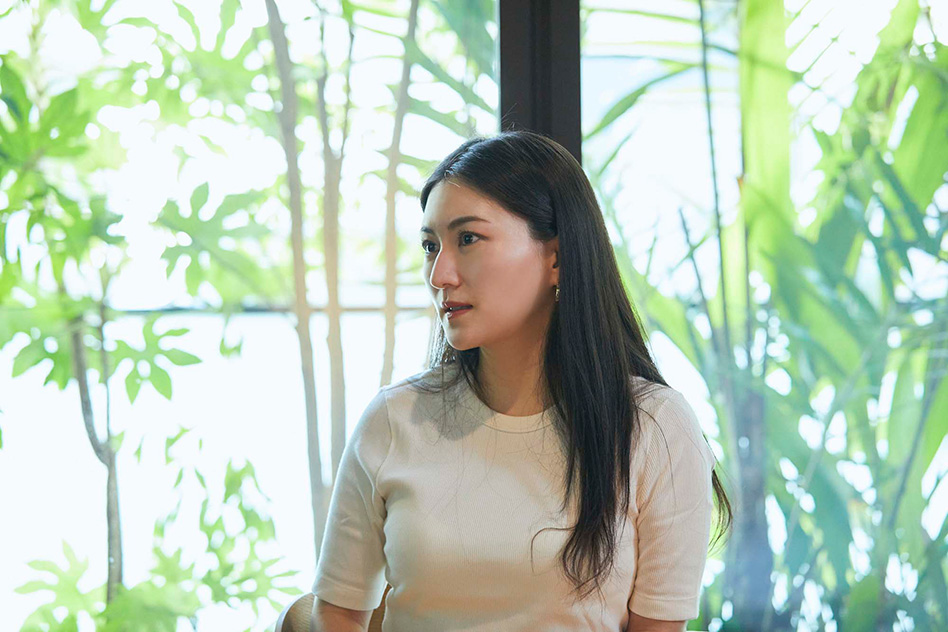
Yonekura: I guess that part of it must be about humility. What I find fascinating is that, at international meetings, there are Japanese people who casually state that Japanese people are averse to competition or confrontation. But from the perspective of foreign countries, it’s the Japanese who first brought the fight to them. For the Japanese, it was a fight for survival. The Toyota Corolla, which was both reliable and popular with the public, could be built at less than half or even one-third the price of a BMW. It was an exercise in the Japanese virtues and interpretations we just touched on. But these things change with time. The criteria for making, building, and creating new attractive products change. In the past, the Japanese believed that affordability and quality were the only two dimensions needed for a product to sell. But there's another invisible dimension to consider: semantic value.
Take, for example, when Steve Jobs first unveiled Apple’s new iPhone to the world. He was reportedly very insistent on its subtle rounded corners. Even though it would suffice for this phone to make calls and connect to the internet, Jobs insisted that without a premium tactile experience, it couldn't truly be an Apple device. Japanese society has matured to the point where we now understand that there is value in this, and in this sense, Europe still has something to teach us. Italy is more productive than Japan, as much as $15 higher in terms of wage per hour of productivity. Looking into why their productivity is higher, it's apparent that they attach high prices to high-quality items. When asked about luxury cars, most people will likely name Ferrari, Lamborghini, Alfa Romeo, and Maserati, all of which are Italian. In the fashion industry, brands like Gucci, Prada, and Armani dominate the market. Japanese cars are great, but only Lexus can compete in the luxury car market. The Italians are ahead of the curve in terms of creating value in an advanced economy. In the past, the Italian automotive industry may have suffered a blow from Japanese car manufacturers, but I think that has changed in recent years. They must have realized that the times called for new value standards.
Okuda: Italy is a culture of craftsmanship, and craftsmanship is an artistic sensibility, which is what makes it so valuable. The U.S. is different. It’s trying to produce value in new technological and digital areas. Italy, on the other hand, adds value in terms of its innate craftsmanship and workmanship. They are different approaches, but they share the same goal of adding new value, and both could be considered innovative.
Yonekura: There are many great artisans in Japan. We need to make more use of them. After all, if you keep doing the same thing over and over again, eventually, you will lose.
Okuda: In the world of classical music, everyone has the same sheet music and sings the same songs. So musicians have to constantly think about how to leave their mark, which is exactly what Italian artisans do. They add value through their sense of style. We must infuse this sense of value creation into our roles as business leaders, just as musicians do in classical music. For instance, there is a clear difference in value between the Queen of the Night* when sung by you, Ayako, and when sung by someone else, with your concert performance demanding a different price. You may use the same sheet music, but the performances are completely different. This is something we need to learn from.
The value of energy is hard to differentiate, yet I firmly believe that without further segmentation and visualization, this business has no future. (Okuda)
Okuda: With energy, I suppose value is perceived as hard to differentiate. But I believe we're transitioning into a period where assigning different values to different segments within the power industry is crucial. Electricity has always been measured and sold using meters. But if we don't move beyond this, I fear this business has no future. For example, renewable energy has high environmental value but lacks stability and flexibility because generation fluctuates depending on natural conditions, and its output cannot be controlled. In contrast, our thermally generated electricity, though having a lower environmental value due to CO2 emissions, embodies values such as flexibility, controllability, and stability. The key is whether we can build a mechanism to market these values. Using the latest digital technologies, we're increasingly able to match the value of electricity with the plant where it was generated. We must challenge ourselves by taking new directions like these.
Yonekura: Nowadays, rooftop solar panels show you how much electricity they are generating. It's fascinating to be able to see your breakdown of energy usage. You can see how thermal power generation forms the base for electricity and how much is being supplemented by renewable energy. Visualization would naturally steer us towards appreciating the value of energy efficiency and renewables.
Okuda: Once people realize how much solar power fluctuates due to the weather, they will understand that we need an alternative to ensure a stable electricity supply. The present system, which mistakenly suggests that solar power alone is enough, is deeply flawed. Solar can hardly be used as electricity without supplemental power. Currently, thermal power generation is what compensates for this fluctuation. By making this visible, people can better appreciate the value that thermal power generation provides. Additionally, if we can reduce the CO2 emissions from thermal power generation, it can increase its environmental value. For instance, using fuels like ammonia or hydrogen in thermal power generation introduces the benefits of zero emissions. This visibility has the potential to revolutionize the energy and power industries. To me, this act of attributing value where it has been previously overlooked is the essence of innovation and a critically vital point.
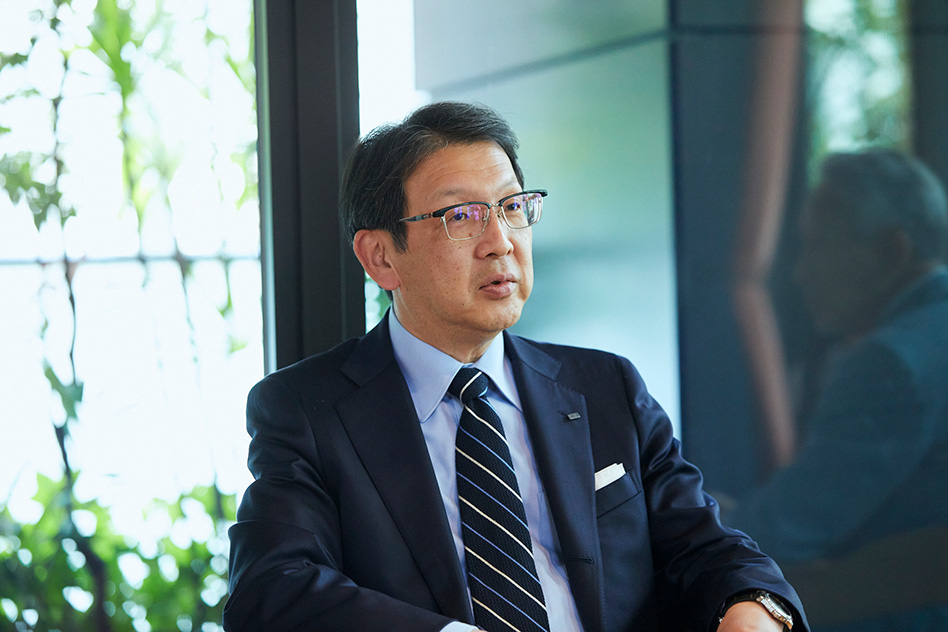
The idea of clean energy or being told to reduce our daily electricity consumption doesn't immediately register with most people, so visualizing it for them would be extremely beneficial. (Tanaka)
Tanaka: Even for a layperson like myself, the issue is clear. We all need to comprehend how much energy we need and how much we're using. Plus, the idea of using clean energy or being told to reduce our daily power consumption doesn't always click, so visualizing it for people would be extremely beneficial.
Yonekura: The idea of visualization is a really interesting one. For example, the now-famous Tanita diet simply measures and records what you eat. When you record something, you tend to focus on it. Similarly, through visualization, not only will the value of JERA become more apparent, but people will turn their attention toward saving electricity. The story behind Tanita's diet is a fascinating one. The current president's father loved making gadgets and developed a scale connected to the internet. But, being too ahead of its time, the scale didn't sell, and Tanita ended up with a mountain of inventory, which was eventually distributed among employees. But when they analyzed the aggregated data from the scales they gave out to employees, they noticed a change in employees' physiques, a decline in illness, and a reduction in insurance premiums. It proved the effectiveness of making things visible. Similarly, making energy usage and its breakdown more visible could be a new method of energy conservation. As Ayako has pointed out, even people who consider energy conservation to be a nuisance might start seeing effects simply by making their consumption visible. This is what I would call a “creative response.” Instead of explaining how to save energy or telling people to turn off their lights, we simply need to make their usage visible. This could be a significant innovation.
It's a truly extraordinary feat to test your mettle by playing to your strengths in an uncertain world. Ayako is doing just that, and her story inspires me. (Yonekura)
Yonekura: Japan is home to artisans who can produce incredible quality at low costs. This is an indisputable value. But I think the challenge is approaching issues from a different perspective, such as figuring out how to sell products at a higher price. Ayako, you chose to sing instead of continuing with the piano because of your small hands. And instead of investing in other expensive instruments, you chose to work with what you already had: your voice. You've harnessed your unique tonal range and held your own in the European classical music scene, which I find truly incredible. We live in a world where things are never easy or straightforward, and similar to your story, Japanese companies, too, must leverage their strengths to compete in other fields. You've truly inspired me.
Tanaka: Thank you.
I see parallels between our power plant employees becoming agents of innovation with our pursuit of zero-emission thermal power and how the samurai class transformed into the entrepreneurs and bureaucrats who drove the Meiji Restoration. They show great promise in areas where they can apply their skills and knowledge. (Okuda)
Okuda: Coming back to the topic of your book, in the reforms of the Meiji Restoration, the samurai class became entrepreneurs, which strikes me as remarkable. It wasn't until I read the book that I appreciated the wealth of knowledge they possessed and their sensitivity to outside pressures that enabled them to adapt.
In recent years, Japan has been under sustained criticism for its lack of progress toward decarbonization. People ask why Japan is still reliant on thermal power for electricity generation at a time when Europe is shutting down nuclear power plants and phasing out coal. Decarbonization of power sources means renewable energy, so the argument goes. But at a time when even Europe cannot meet all its electricity demands with renewables, one begins to question whether this is genuinely the best path. The goal should be to decarbonize, not to promote renewable energy. So, if we can decrease CO2 emissions, it seems feasible to keep generating thermal power, provided it does not emit CO2. I think this was a big fork in the road for JERA.
Suppose I had suddenly announced to the company that JERA was now opting for renewables, so sadly, thermal power is no longer viable, and staff will have to be let go. Employee morale would have plummeted. Yet, when I declared that our plan was to aim for decarbonization by integrating zero-emission thermal power with renewables, the boost in company morale was palpable. A plethora of ideas began to emerge, just like the examples you give in your book. It feels analogous to the samurai transitioning into entrepreneurs and bureaucrats. Our employees have demonstrated remarkable potency when their skills and knowledge are put to good use. We began talking about the advantages of ammonia and how we're accustomed to handling it, which provided me with a sense of confidence and led me to think, "Let's go all in on ammonia.” The joy in moments like these is the real thrill of my work.
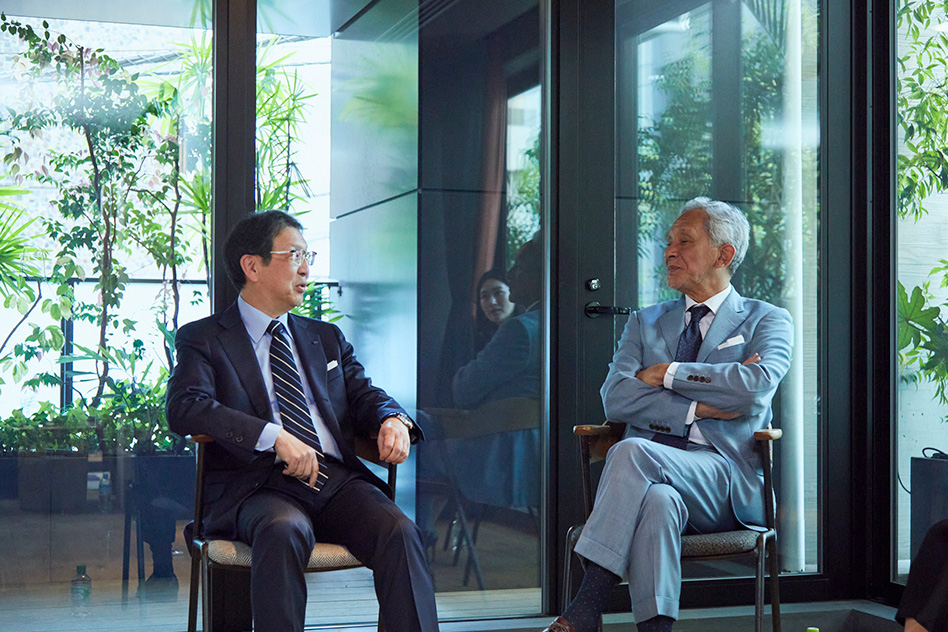
Yonekura: Fundamentally, it comes down to maximizing the assets you have and bolstering your strengths. What I would really like to see JERA do is pose an alternative to Europe's push for decarbonization, which is a formidable challenge that stresses the idea that reaching anything less than 100% renewables is unacceptable. Hence, I'd like Japan to stress that continuing down the current course would be tantamount to a neglectful worldview where it's acceptable for regions like Africa, Bangladesh, and India to keep suffering from power outages. While Japan shares the same goal of decarbonization, transitional technology is essential to facilitate a smoother transition to better living conditions for people worldwide, and I urge JERA to advocate adamantly for this. It's not about improving only those regions where renewables are feasible. It’s about providing technology that pushes the entire world forward without leaving anyone behind. I believe JERA’s commitment will be met with praise throughout the world.
The ability to adopt a flexible mindset is significant. At any crossroads, it’s crucial to turn crisis into opportunity and view things from different angles. (Tanaka)
Tanaka: As I listen, I am struck by the immense importance of being able to adopt a flexible mindset. Indeed, one option is to halt the use of coal-fired power generation, especially considering the calls for decarbonization from Western countries. However, the idea that JERA can change how these coal-fired power plants are used speaks volumes about its flexibility. I gave up playing the piano due to the size of my hands, but looking back now, I could have played any piece as long as it didn't require more than an octave. In fact, I was particularly good at playing quickly, so had I chosen to avoid pieces that required more than an octave, I might have continued playing. At the time, there seemed to be a prevailing belief that a pianist must be able to play anything and be able to reach more than an octave. This belief caused me to abandon the instrument, but retrospectively, I see that it was a missed opportunity. This conversation has led me to believe that it’s crucial to turn crisis into opportunity and view things from different angles.
Yonekura: Yes, I would say so. The prospect of being the best performer within a single octave is intriguing. If anything, I'm worried about Japan's preoccupation with seeking out and conforming to global standards. As Ayako suggested, adopting a flexible mindset and striving to do our best in areas where we excel makes perfect sense. It makes me wonder if we're losing our flexibility in some ways.
The concept of "diversity" is everywhere these days, but when I find myself among a group of very different individuals, the term "acceptance" seems a bit off to me. It's crucial to be able to acknowledge and say, "I understand that's your perspective. Here's mine." That’s why I think that while you can be flexible, holding onto your core beliefs is crucial. (Tanaka)
Tanaka: Both of you occupy such distinguished roles in seemingly rigid environments, yet you manage to remain open-minded. What's your secret?
Okuda: Speaking from personal experience, I think it involves having a wide range of experiences outside of work. The values we come into contact with on the job are invariably limited. I, for one, am not satisfied with my life revolving solely around work, so I fill my weekends with classical concerts, sports events, and trips to art galleries and museums. It's in spaces like these where I interact with people who inhabit different worlds, all with different values, which heightens my capacity for diversity, inclusion, and the acceptance of alternative viewpoints. I suspect that this ultimately fosters a more open-minded way of thinking.
Tanaka: Now that you mention it, the concept of "diversity" is everywhere these days, but when I find myself among a group of very different individuals, the term "acceptance" seems off to me. I think it is fine for people to be themselves, but that doesn’t mean that I need to accept them.
Okuda: I don't think acceptance necessarily means assimilation but rather an understanding of differences. That's critical, but I believe many Japanese people often misconstrue this to mean that everyone must be the same or equal. It's crucial to understand and accept differences.
Tanaka: Upon hearing this, I speculate that our responses to diversity largely depend on our range of experiences and observations. It's crucial to be able to acknowledge, "I understand that's your perspective. Here's mine." That’s why I think that while you can be open-minded, it's crucial to hold onto your core beliefs.
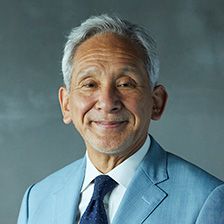
Professor Emeritus, Hitotsubashi University Professor, Hosei University Graduate School
Seiichiro Yonekura
Born in 1953. Specializes in business history. B.A. in Sociology and Economics, Hitotsubashi University; M.A. in Sociology, Hitotsubashi University.
D. in History from Harvard University (PhD.). D. in History from Harvard University. Currently, he also serves as President of Creative Response Social Innovation School and Chairman of the Editorial Board of Hitotsubashi Business Review.
He specializes in historical research on corporate management strategies, development processes, and organizations with innovation at the core, and is enthusiastically supported by numerous business leaders. He is the author of numerous books, including Creative Response: Entrepreneurial History of Modern Japan (Toyo Keizai Shinposha).
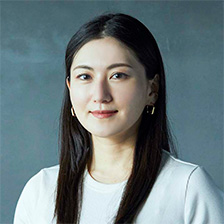
Ayako Tanaka
Soprano singer
CEO, Japan Association for Music Education Program
At the age of 18, Tanaka traveled to Vienna alone to study. At 22, she made her debut at the Stadttheater Bern in Switzerland, becoming the youngest soloist ever in the theater and the first Japanese person to perform there. Since then, she has performed in Vienna, London, Paris, Buenos Aires, and many other cities worldwide. Her premiere concert of „Five Circle Songs for Coloratura Soprano and Orchestra“ composed for her voice by Esteban Benzecry, was chosen the Best World Premiere Piece by the Argentine Music Critic Association. The album received five stars from the BBC Music Magazine, the world's best-selling classical music magazine.
Tanaka is also engaged in giving back to society through activities such as the SCL International Youth Music Festival held in Vienna with the support of UNESCO and the Austrian government to assist young performers, as well as the National Youth Orchestra of Argentina, which was established with the support of the Argentine government to provide education to young people of various backgrounds and family situations through music.
Tanaka was named one of Newsweek's "100 Most Respected Japanese in the World" in 2019. She sang the Japanese national anthem on October 22 at the opening ceremony of the SMBC Nippon Series 2022.
Born in Kyoto, Tanaka lives and works in Vienna.
RELATED STORIES
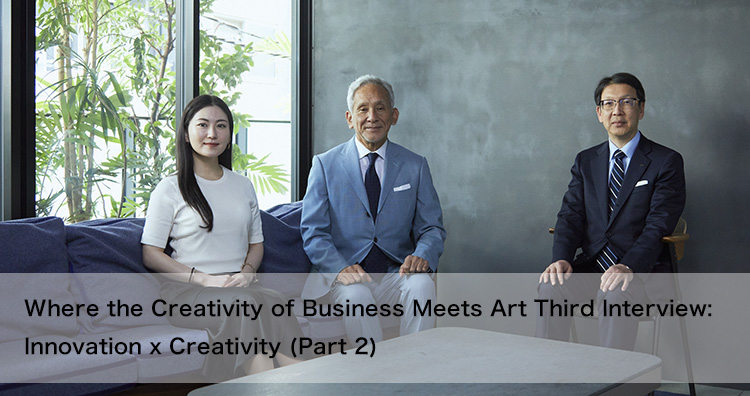
Where the Creativity of Business Meets Art Third Interview: Innovation x Creativity (Part 2)
All human beings become innovators the moment they're born. You should take a stab at doing something interesting, …

Where the Creativity of Business Meets Art Second Interview: Education x Creativity (Part 1)
Today marks the first time we’re doing a three-person interview. We are joined by Mr. Kaito Miwa, CEO and co-founder of …

Where the Creativity of Business Meets Art Second Interview: Education x Creativity (Part 2)
Recently, I've developed a new presentation style, where I seek to connect with the audience by openly sharing my weaknesses

